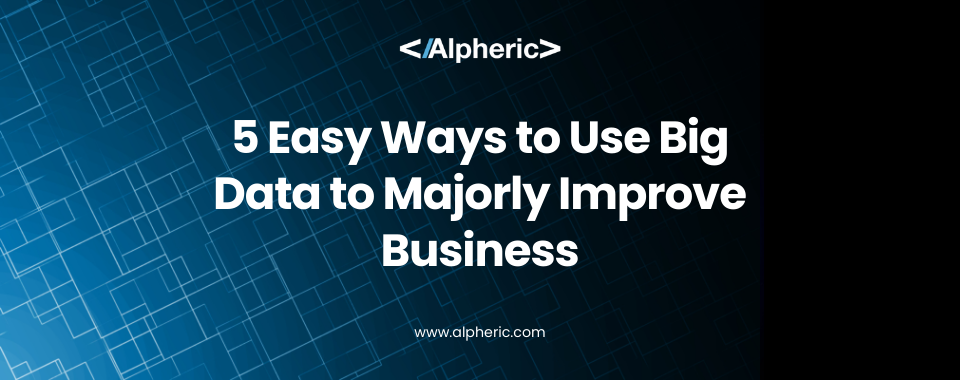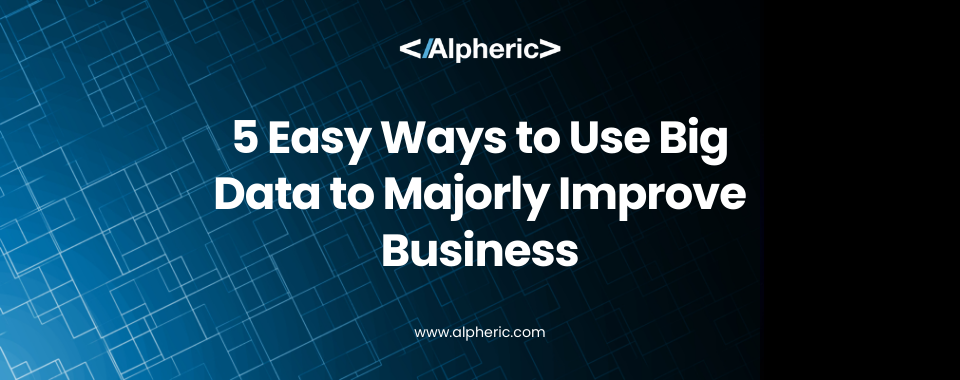
Big data. The term itself sounds heavy, doesn’t it? When people hear “big data,” they often imagine complicated dashboards, piles of numbers and endless spreadsheets. But the truth is, big data doesn’t have to be complicated. In fact, small businesses and startups can use big data in simple ways to make a big difference.
You don’t need to be a tech expert to use data smartly. You just need to know where to look and how to use the insights you gather. Today, let’s break it down into five easy, actionable steps that can help improve your business.

1. Spot Trends Using Google Tools
Think of Google as your free business consultant. Google collects and organizes tons of data from users worldwide, and they offer free tools to share some of that insight with you.
Google Trends is one such tool. It helps you understand what people are searching for in real-time. You can type in any keyword related to your business and see how interest in that topic has changed over time.
Let’s say you sell handmade soaps. You search for “organic soap” on Google Trends and notice that searches spike around the holiday season. That’s a great insight! You can start your holiday campaigns earlier and stock up your inventory in advance.
Another tip: Check out the “related queries” section in Google Trends. It shows you what else people are looking for in connection to your keyword. Maybe people are also searching for “eco-friendly packaging.” That could be your next business opportunity!
Why this works:
Google Trends shows what customers are curious about, helping you create content, offers and products that match their interests.
2. Listen to Social Media Conversations
People talk. And they talk a lot on social media! Platforms like Twitter, Facebook, Instagram, and LinkedIn are gold mines of real-time customer feedback.
By listening to these conversations, you can find out what customers love, what annoys them, and what they wish they had. This is called social listening.
There are many tools for this — free and paid. Tools like SocialMention or even just Twitter’s advanced search let you monitor mentions of your brand, products, or competitors. Suppose you see people complaining that your competitor takes too long to reply to customer queries. Here’s your chance to stand out by offering faster support!
You can also follow trending hashtags in your industry to join relevant conversations and showcase your expertise.
Why this works:
Social listening helps you understand your audience better, improve customer service, and spot gaps in the market that you can fill.
3. Track Influential People in Your Network
Your social network isn’t just for posting updates — it’s a valuable business tool. The people you’re connected with can open doors to new opportunities, collaborations, and insights.
Using tools like Google Alerts or Newsle (now integrated into LinkedIn features), you can stay updated whenever someone in your network is mentioned online. Maybe an industry expert you follow has written a new article. Commenting or sharing their post not only supports them but also builds your visibility.
Engaging with influencers or thought leaders regularly helps you stay on their radar. When the time comes for partnerships, media mentions, or referrals, you’ll already have a warm connection.
Why this works:
Tracking influencers in your network helps you build relationships and grow your credibility in the industry.
4. Understand Your Website Visitors Better
If you have a website, you already have access to valuable data — you just need to read it the right way.
Free tools like Google Analytics or Quantcast can show you who your visitors are, where they come from, how long they stay, and what pages they visit. You can even see what devices they’re using. For example, if most visitors are on mobile, make sure your site is mobile-friendly!
Suppose you notice that a lot of visitors are dropping off at the checkout page. That signals a problem. Maybe the page is too slow, or the process is too complicated. Now you know where to focus your improvements.
Why this works:
Understanding your website data helps you create a better experience for visitors and convert more of them into customers.
5. Customize Customer Experiences
Today, customers expect personalized experiences. They don’t want to feel like just another number. Big data can help you give them exactly that.
Start simple. Track customer behaviors — like what products they browse, what they add to their cart, and what they actually buy. Use email tools like Mailchimp or CRM systems like HubSpot to send personalized offers.
For example, if a customer recently bought a skincare product, you could send them a follow-up email with care tips or related products. Small touches like this build customer loyalty.
Even if you don’t have an advanced CRM, you can use data from your social media followers or email subscribers to send targeted content based on their interests.
Why this works:
Personalization makes customers feel valued, increasing the chances they’ll return and recommend you to others.
Conclusion
Big data doesn’t have to be scary or complicated. Start small. Use free tools, pay attention to simple insights, and apply them to your daily business decisions. Step by step, you’ll see improvements in customer engagement, sales, and overall growth.
To recap:
- Use Google Trends to spot customer interests.
- Monitor social media to catch opportunities and improve service.
- Track influential connections in your network for partnerships.
- Analyze website traffic to boost conversions.
- Personalize customer experiences to build loyalty.
The best part? You don’t need fancy degrees or big budgets to make data work for you. With consistency and curiosity, even small efforts with big data can lead to major improvements in your business.
So go ahead with alpheric, take the first step today — your future self will thank you!







